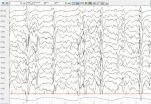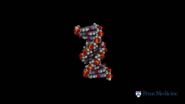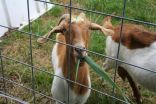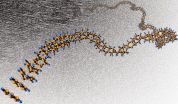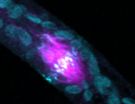(Press-News.org) In the largest collaborative study so far, an international team of researchers, including scientists from VIB and Antwerp University identified novel causes for severe childhood epilepsies. The researchers analyzed the genetic information of 356 patients and their parents. In their analysis, the research teams looked for genes that had acquired new mutations in the children with severe epilepsies when compared to the DNA of the parents. In total, they identified 429 new mutations and in 12% of children, these mutations were considered unequivocally causative for the patient's epilepsy. In addition to several known genes for childhood epilepsies, the research team found strong evidence for additional novel genes, many of which are involved in the function of the synapse, the main structure in the nervous system that allows for communication between neurons.
Dr. Ingo Helbig, child neurologist at the Department of Neuropediatrics, Kiel University, Germany, and one of the project leaders of the European EuroEPINOMICS consortium. "These genes will hopefully tell us a bit more about the underlying disease mechanisms and how we can address them with new treatments. This is nothing less than a revolution in epileptology - it is the first time a significant proportion of genetic epilepsies can be explained through molecular findings. In the past, we had to subject patients to a long diagnostic journey of various tests and investigations. With the novel technologies, we can get the answer much faster - this will translate into better patient care. " Dr. Helbig is also member of the Genetics Commission of the International League Against Epilepsy (ILAE).
Prof. Dr. Peter De Jonghe, group leader at VIB and Antwerp University; one of the project leaders of the European EuroEPINOMICS consortium; and member of the Genetics Commission of the International League Against Epilepsy (ILAE): "Combining data sets of three large consortia has proven to be a productive and cost-effective strategy to unravel the molecular genetic background of severe epilepsies in childhood. Collaborations are definitively the way to tackle these individually rare disorders. "
Epilepsies
Epilepsies are amongst the most common disorders of the Central Nervous System, affecting up to 50 million patients in worldwide. Up to one third of all epilepsies are resistant to treatment with antiepileptic medication and are associated with other disabilities such as intellectual impairment and autism. Severe epilepsies are particularly devastating in children. In many patients with severe epilepsies, no cause for the seizures can be identified. There is increasing evidence that genetic factors may play a causal role in these epilepsies. The current study by three international consortia, including the NINDS-funded Epi4K and EPGP consortia and the ESF-funded European EuroEPINOMICS consortium, which includes researchers from more than 20 European countries, assessed the role of genetic factors in the largest group of patients with severe epilepsy identified so far.
An essential role for Dynamin 1
The most surprising finding in the current study is a gene called Dynamin 1. Dynamins are functionally associated with synapses, which are important for the communication between nerve cells. When the researchers looked on a network level, they found that many of the genes that were found to be mutated in patients had a clear connection with the function of the synapse. The results of the study were published in the American Journal of Human Genetics on Thursday September 25th. A blog post by Dr. Helbig about the recent publication can be found on "Beyond the Ion Channel", the blog of the Genetics Commission of the International League Against Epilepsy, (channelopathist.net).
INFORMATION: END
New genes identified with key role in the development of severe childhood epilepsies
2014-09-25
ELSE PRESS RELEASES FROM THIS DATE:
How the ends of chromosomes are maintained for cancer cell immortality
2014-09-25
VIDEO:
The perpetual proliferation of cancer cells requires a means to maintain telomere length. Alternative lengthening of telomeres (ALT) is a poorly understood mechanism of telomere maintenance that is utilized by...
Click here for more information.
PHILADELPHIA – Maintaining the ends of chromosomes, called telomeres, is a requisite feature of cells that are able to continuously divide and also a hallmark of human cancer. "Telomeres are much like the plastic cap on the ends ...
USC researchers discover dual purpose of cancer drug in regulating expression of genes
2014-09-25
LOS ANGELES — Keck Medicine of USC scientists have discovered new clues about a drug instrumental in treating a certain blood cancer that may provide important targets for researchers searching for cures.
The team investigated whether demethylation of gene bodies induced by the drug 5-Aza-CdR (decitabine), which is used to treat pre-leukemia, could alter gene expression and possibly be a therapeutic target in cancer.
"When we put the drug in cancer cells, we found it not only reactivated some tumor suppressor genes, but it down-regulated the overexpressed oncogene ...
NASA-NOAA's Suomi NPP satellite sees Tropical Storm Kammuri coming together
2014-09-25
When NASA-NOAA Suomi NPP satellite passed over Tropical Storm Kammuri the VIIRS instrument aboard took a visible picture of the storm that showed bands of thunderstorms wrapped around its center. The storm appears to be coming together as circulation improves and bands of thunderstorms have been wrapping into the low-level center of circulation.
NASA-NOAA's Suomi NPP satellite passed over Tropical Storm Kammuri on Sept. 25 at 03:13 UTC (Sept. 24 at 11:13 p.m. EDT) and the Visible Infrared Imaging Radiometer Suite (VIIRS) instrument aboard captured a visible picture of ...
Researchers engineer 'Cas9' animal models to study disease and inform drug discovery
2014-09-25
Cambridge, MA, September 25, 2014 — Researchers from the Broad Institute and Massachusetts Institute of Technology have created a new mouse model to simplify application of the CRISPR-Cas9 system for in vivo genome editing experiments. The researchers successfully used the new "Cas9 mouse" model to edit multiple genes in a variety of cell types, and to model lung adenocarcinoma, one of the most lethal human cancers. The mouse has already been made available to the scientific community and is being used by researchers at more than a dozen institutions. A paper describing ...
Satellite catches an oval-shaped Tropical Storm Rachel
2014-09-25
NOAA's GOES-West satellite spotted the eighteenth tropical depression of the Eastern Pacific grow into a tropical storm that was renamed Rachel today, Sept. 25, 2014. Wind shear is affecting the tropical storm, however, so it doesn't have a rounded appearance on satellite imagery.
Tropical Depression 18-E formed on Wednesday, Sept. 24 around 11 a.m. EDT about 285 miles (460 km) south-southwest of Manzanillo, Mexico. Manzanillo is a city in the Manzanillo municipality of the Mexican state of Colima on the country's west coast.
In an infrared image from NOAA's GOES-West ...
Can genetic engineering help food crops better tolerate drought?
2014-09-25
New Rochelle, NY, September 25, 2014—The staggering growth rate of the global population demands innovative and sustainable solutions to increase food production by as much as 70-100% in the next few decades. In light of environmental changes, more drought-tolerant food crops are essential. The latest technological advances and future directions in regulating genes involved in stress tolerance in crops is presented in a Review article in OMICS: A Journal of Integrative Biology, the peer-reviewed interdisciplinary journal published by Mary Ann Liebert, Inc., publishers. ...
Goats better than chemicals for curbing invasive marsh grass
2014-09-25
DURHAM, N.C. -- Herbivores, not herbicides, may be the most effective way to combat the spread of one of the most invasive plants now threatening East Coast salt marshes, a new Duke University-led study finds.
Phragmites australis, or the common reed, is a rapid colonizer that has overrun many coastal wetlands from New England to the Southeast. A non-native perennial, it can form dense stands of grass up to 10 feet high that block valuable shoreline views of the water, kill off native grasses, and alter marsh function.
Land managers traditionally have used chemical ...
Smallest-possible diamonds form ultra-thin nanothread
2014-09-25
Washington, D.C.— A team including Carnegie's Malcolm Guthrie and George Cody has, for the first time, discovered how to produce ultra-thin "diamond nanothreads" that promise extraordinary properties, including strength and stiffness greater than that of today's strongest nanotubes and polymer fibers. Such exceedingly strong, stiff, and light materials have an array of potential applications, everything from more-fuel efficient vehicles or even the science fictional-sounding proposal for a "space elevator." Their work is published in Nature Materials.
The team—led by ...
Genes causing pediatric glaucoma contribute to future stroke
2014-09-25
(Edmonton, AB) Every year in Canada about 50,000 people suffer from a stroke, caused either by the interruption of blood flow or uncontrolled bleeding in the brain. While many environmental risk factors exist, including high blood pressure and smoking, stroke risk is also frequently inherited. Unfortunately, remarkably little is known regarding stroke's genetic basis.
A study from the University of Alberta, published in the Journal of Clinical Investigation, extends knowledge of stroke's genetic underpinnings and demonstrates that in some cases it originates in infancy.
The ...
Unlocking long-hidden mechanisms of plant cell division
2014-09-25
AMHERST, Mass. – Along with copying and splitting DNA during division, cells must have a way to break safely into two viable daughter cells, a process called cytokinesis. But the molecular basis of how plant cells accomplish this without mistakes has been unclear for many years.
In a new paper by cell biologist Magdalena Bezanilla of the University of Massachusetts Amherst, she and her doctoral student Shu-Zon Wu present a detailed new model that for the first time proposes how plant cells precisely position a "dynamic and complex" structure called a phragmoplast at the ...
